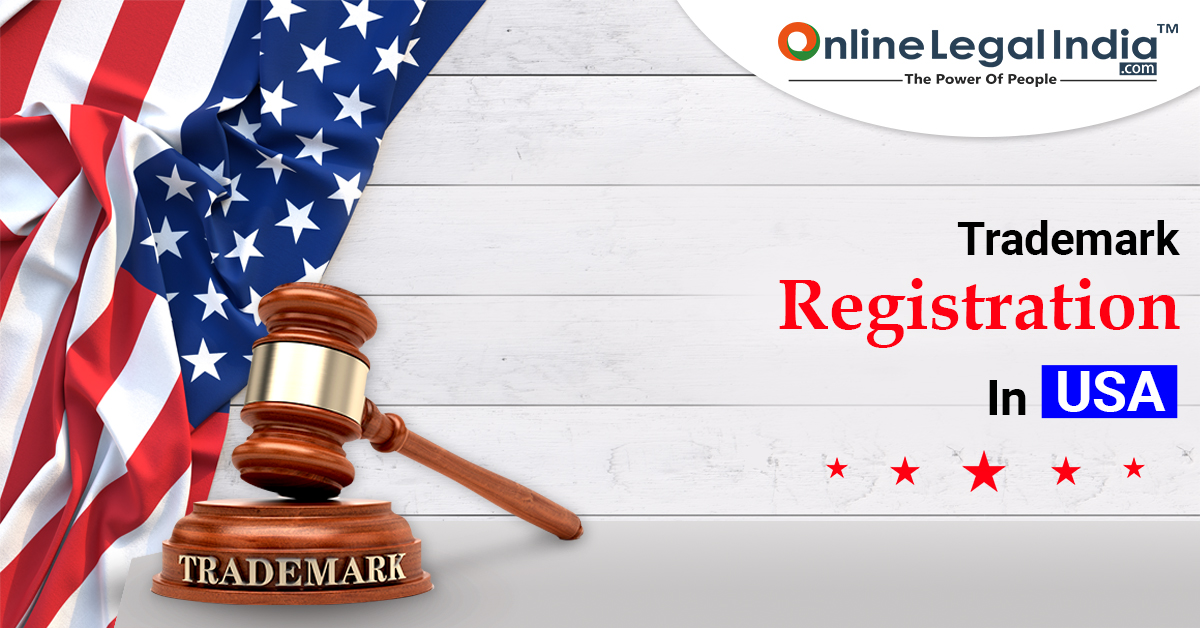Get to Know About the Steps of the GST Registration Process
29 Jul, 2024

 By Online Legal India
Published On 15 Jun 2022
Updated On 04 Jan 2025
Category Trademark
By Online Legal India
Published On 15 Jun 2022
Updated On 04 Jan 2025
Category Trademark
A symbol, slogan, figure, or even a combination of colours can all be used to represent your brand's identity. Trademark registration with the Ministry of Commerce and Industry, Government of India, protects this identification. Trademarks are symbols for your company that represent what it stands for and tell a story about it. In basic terms, they are one-of-a-kind brand tags that serve to safeguard the brand's name.
The trademark is territorially protected, meaning it can only be used in the nation where it is registered. If you want to use the brand name in other countries, the trademark must be secured in each of them.
For trademarks, each country has its own set of rules and regulations. The United States, as one of the world's most powerful trading and economic nations, has its own set of criteria for filing and getting a trademark. The USPTO is the agency in charge of trademark laws and procedures in the United States (the United States Patent and Trademark Office).
It is not necessary to register a trademark, and trademark rights can be gained without doing so. However, registration has various advantages and can be accomplished by submitting an application to the USPTO.
For instance, when you register your trademark, you obtain statutory protection against infringement. It's also easier to prove in court that you're the rightful owner of a trademark if you register it. You get to put a ™, C, or R symbol next to your trademark to show that you own it and to warn others not to use it.
The following is a list of details and papers that must be provided for trademark registration in the United States:
If you are an Indian corporation filing for a trademark in the United States, you must first register your trademark in India. You will be applying for a US trademark registration based on your Indian trademark registration.
The four sorts of 'filing basis,' according to trademark regulations, are based on the requirement and the services provided by the brand.
Already in use: If the trademark has been used to trade products and services across multiple borders, it is already in use (states and countries)
Future use: If the individuals have not yet used their trademark but plan to do so within the next 4-5 years, the registration can be done on this basis.
Foreign application: The foreign application must have been filed on this basis, and registration must be completed within six months.
Foreign registration: Foreign registration has been performed on this basis. The final step is to submit a certificate together with the necessary information.
On the TEAS website, you can file a trademark application (Trademark Electronic Application System). The following are the measures to take in order to apply:
Step 1: Determine whether or not a trademark is available
Check to see if your trademark can be registered in the United States. This will necessitate a thorough search of the US trademark registry database to see if any identical or similar trademarks have already been registered.
Step 2: Submitting your application
After gathering all of the essential information, the application is filled out and submitted to the USPTO.
Step 3: Ensure that the trademark is valid
The Trademark Examiner examines the trademark once it has been filed on numerous bases.
Step 4: Trademark Office action and clearance
A notice is provided regarding the application if any inappropriate information or errors are discovered. A six-month timeframe is given to rectify the information or reapply for approval of the application. If no objections are raised, the form is sent to the Official Trademark Gazette for approval.
Step 5: It's time for some competition
After the trademark is published, other companies and individuals have 30 days to file an opposition to your mark.
Step 6: Complete your registration
If neither the opposition nor the trademark examiners raise any objections, the trademark registration application is eventually authorised and finalised. A 'notice of allowance' is also provided.
Objection and opposition: If you face an objection or resistance, you will be given ample opportunity to respond with reasons and evidence for why you should be granted the right to use the mark. Furthermore, if your arguments and evidence are convincing, they will grant you trademark registration. Otherwise, your application will be turned down.
The trademark is valid for ten years after it is registered. Before the ten-year period expires, you can renew your trademark registration to gain another ten years of protection.
The following are some of the benefits of registering a US trademark:
Having said that, registering a trademark in the United States can be a daunting and time-consuming process. As a result, we recommend that you take a look at our trademark registration service in the United States. The majority of the activities (such as trademark research, documentation, and filing) will be handled by Online Legal India professionals, who will also guide you through the procedure.